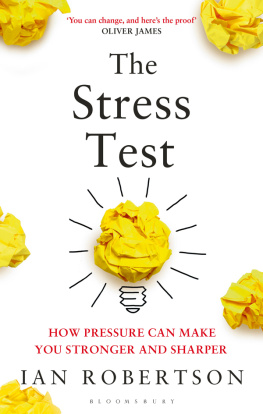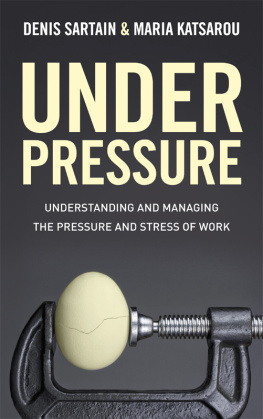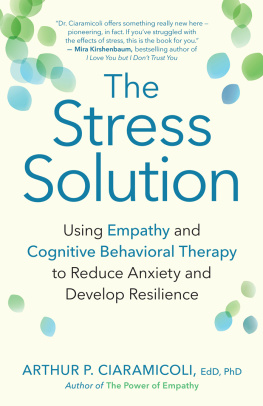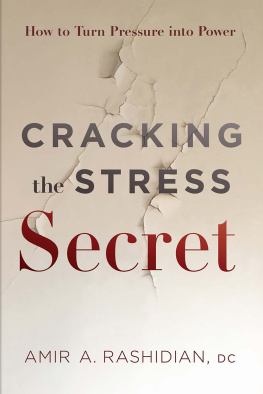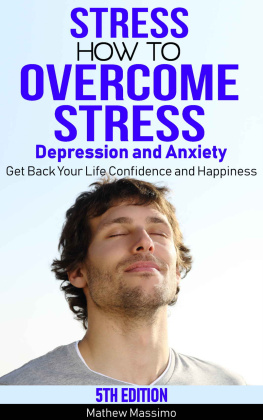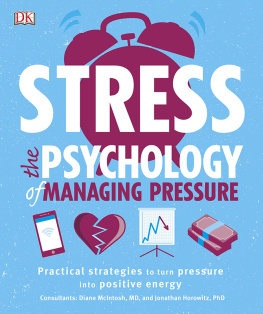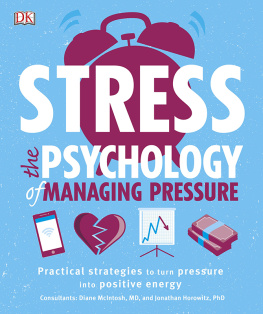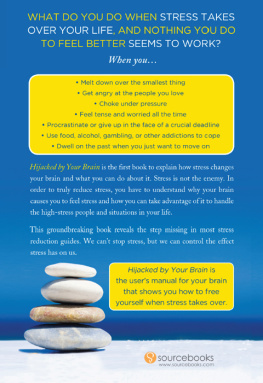THE STRESS TEST
The Winner Effect
Mind Sculpture
The Minds Eye
THE STRESS TEST
How Pressure Can Make You
Stronger and Sharper
Ian Robertson

To Geoff and Wendy, dear friends and masters of resilience.
Contents
My fingers drummed on the desk as I waited impatiently for the computer to start up. Usually it took seconds but today it was minutes before finally the familiar screen glowed into view. I clicked on the Outlook email icon and waited... and waited. Finally I could access my email, but every operation was grindingly slow. The same was true for Word. My computer had gone on a go-slow, work-to-rule or whatever the digital equivalent is.
Our technician diagnosed a glitch in the software and recommended reinstalling the operating system, which she did. But no luck the computer was still on a go-slow.
The latest operating system is probably too big for its current RAM memory, Lisa said. We need to upgrade it.
By the next day, with new software and a bigger memory, my computer was working again and I had my digital life back.
We are used to thinking about computer performance in terms of software, hardware and their at times fraught relationship. But we have no trouble in understanding that reprogramming the software can boost hardware performance. The same, however, cannot be said for how some people, including professionals, think about the mind and the brain.
At the beginning of my career I worked for ten years as a practising clinical psychologist before moving into brain research, an unusual combination of experience that has led me to discover some crucial things about how the software of our minds and the hardware of our brains work or dont work together. I now realize that the mind and the brain interact with each other in ways I could never have believed when I set out on this journey.
For a long time I regarded my early work as a clinical psychologist treating people with various types of emotional problems as being unconnected with my second career as a neuroscientist looking at attention and brain rehabilitation. That made sense, because in most of science and medicine they are disconnected, too. Even nowadays, the brains hardware researchers hardly ever talk to the minds software practitioners, and vice versa. Gradually, however, I have come to understand that many conditions affect both the software and the hardware and that, just as my technician needed to deal with both of these in order to re-establish the good performance of my computer, the same is true for psychology and neuroscience.
So, belatedly, its time for me to bring together everything I have learned from the two parts of my career. In this book I have gone back in time to review some of the cases I saw as a clinical psychologist through eyes informed by thirty years of research in neuroscience. And at the same time, I have also consciously brought my clinical psychologists eye to bear on that hardware neuroscience research for clues as to how people can learn to cope with emotional problems and embrace the stress that follows in their wake.
It is my good fortune to have straddled the boundary between clinical psychology practice and cognitive neuroscience theory, and hence to have been able to develop a new understanding of how we can tune our mind-brains, using both hardware and software, to increase our performance, to cope positively with lifes adversities and to rise to challenges. That is what this book is about.
Every Monday morning, I wheeled the anaesthetized patients down to the treatment room. The psychiatrist would hold the electrodes to their heads, the bodies would judder as the current flowed, and then they would lie still. Then it was my job to wheel them back up to the ward where, an hour or two later, they would wake up, dazed and a little bewildered.
It was 1975 and I was working as a nursing assistant in a gleaming new psychiatric ward in New Zealand. Every Monday morning I had to assist in the treatment electroconvulsive therapy (ECT) that was given to many of the patients on the ward, across many different diagnoses.
They stayed for a few weeks, very occasionally months, in this unit before they were sent on their way. Only a minority showed florid psychiatric symptoms such as hallucinations, delusions, mania or severe depression. A few were alcoholic, but the majority were suffering from depression, anxiety problems or personality disorders. I knew this because, as a graduate in psychology, I was allowed to read their notes.
Occasionally after the ECT I would witness a near-miraculous change in a profoundly depressed patient. And it was wonderful to see someone awake with a lightened spirit, having escaped from the black cave of depression. But most people seemed unchanged at best; the psychotic patients were often a little worse.
I remember one of the consultant psychiatrists who ran the unit explaining to me patiently one day that there was a clear division between mental illness, which required medical treatment, and counselling for life problems, which could be done by any reasonable person.
The patients in here, he told me confidently, are sick, and our treatments are ECT and medication they dont need counselling.
And so, in that ward where I worked for almost a year, everyone was on pharmaceuticals of some sort, usually several different types, and the majority were wheeled down for their ECT on a Monday morning. That was the routine.
There was, however, another consultant psychiatrist who, though nominally also responsible for the unit, very seldom admitted any of his patients to the ward, and, when he did, they were either very sick or very suicidal. Instead, he ran a day clinic where the treatment was mainly various types of psychotherapy and group therapy delivered by trained nurses and psychologists. I worked there for a few weeks as well, and it seemed to me that the types of patients being treated in the day hospital didnt differ much from those admitted to the wards by the other two doctors.
I was puzzled by the two completely different therapeutic approaches. My mentors on the ward were very clear that medical intervention of some sort was the answer to their patients problems. However, as a psychology graduate brought up in the wake of the 1960s fashion for personal and human potential development, I was sympathetic to the approach of the third consultant that by talking through their problems, people under great stress should be able to resolve them and so find relief from that stress.
But, if I am honest, I couldnt see a clear difference in the outcomes of the patients under the two regimes. All of which left me a bit confused.
* * *
It was while working as a teacher in the Fiji islands a year earlier, in 1974, that I had first come across the works of the nineteenth-century philosopher-psychologist Friedrich Nietzsche, in the sparsely furnished bookshelves of the public library in the sleepy town of Lautoka. In the absence of any more enticing reading matter I settled down to read his Twilight of the Idols, which, it turned out, he had written in a little under a week as an introduction to his wider work. I had studied philosophy at Glasgow University in conjunction with my psychology degree, but Nietzsche had not been part of the course.
This was a real pity as he was not only a respected philosopher, but also as influential as a psychologist in his time as Sigmund Freud. In fact, he proposed many of the ideas which are attributed to Freud, several decades before Freud did, including the concept of the unconscious and the idea that we repress uncomfortable emotions or project them on to others.

